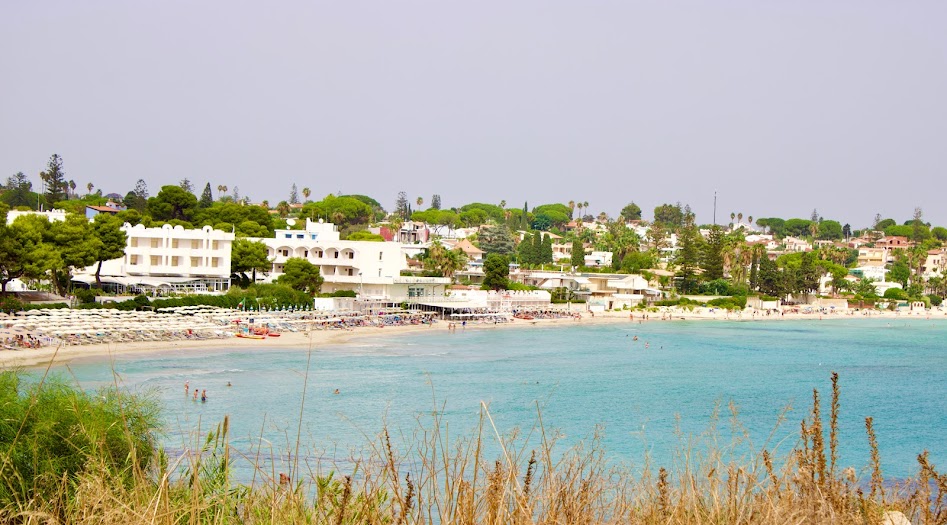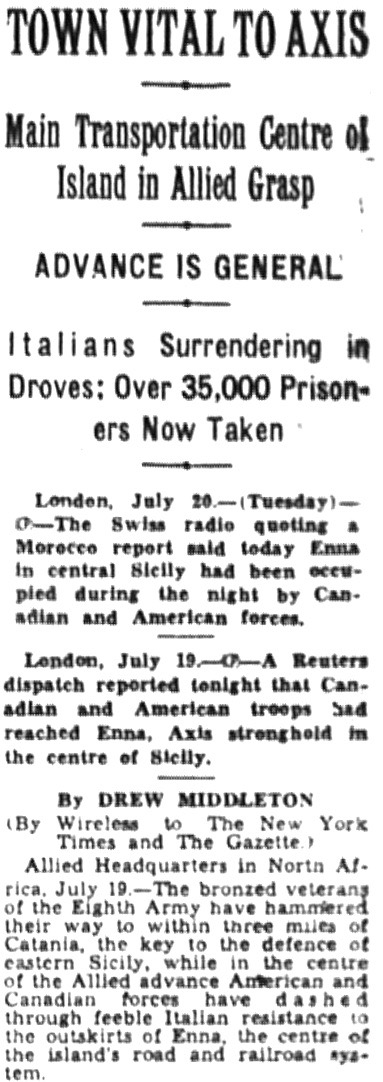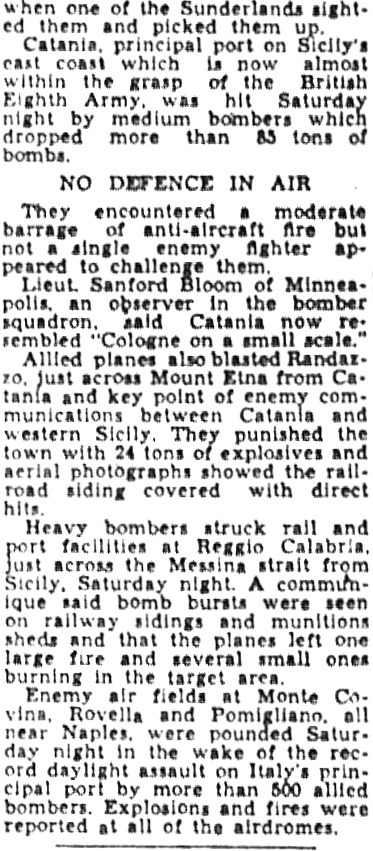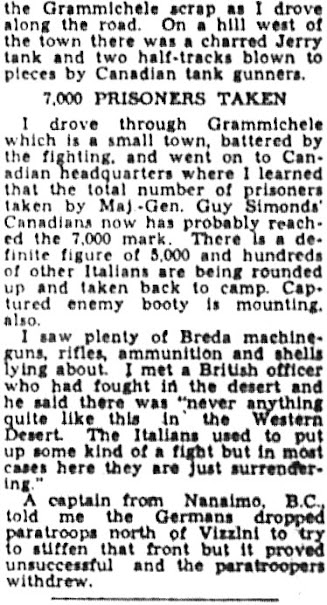Combined Operations Pilotage Parties (COPP), Top-Secret, WWII
Another Little Known Group Connected to Combined Ops
"Troops and equipment being unloaded on Z Beach near Saint Leu."
Found at COPP Survey. Source: US National Archives 175738957
Introduction:
Please note the introductory photograph. Four things stand out.
First, Allied troops have successfully landed on the shores of North Africa beginning early morning November 8, 1942 as part of Operation TORCH. In this case, American "troops and equipment (are) being unloaded on Z Beach," the first major operation U.S. forces participated in with significant numbers during WWII (50 U.S. Rangers had participated in Operation JUBILEE, the Dieppe raid, 11 - 12 weeks earlier).
Second, troops and equipment are being transported by Allied LCAs (Landing craft, Assault) and LCMs (Landing Craft, Mechanised) because the beaches are too shallow to accommodate deep-keeled troop ships like the Reina Del Pacifico (see below). And there are no lengthy piers or undamaged docks to accommodate 1,000s of troops and tons of Allied shipping. Thus the need for 100s - eventually 1,000s for future operations - of small landing crafts and crews, and a significant call out to Canada in late 1941 for volunteers for the Combined Operations organization (a planning department related to the British war effort and creator of COPP SURVEY; click here for more details and list of operations undertaken).
American troops manning their landing craft assault from a doorway in the
side of the liner REINA DEL PACIFICO. Two of the landing craft are numbered
LCA 428 and LCA 447. Credit - Photographer Lt. F. A. Hudson, @ IWM
Third, my father served in RCNVR and Combined Operations during the landings of American troops and their equipment at Z Beach, near Arzeu (east of Oran) during Operation TORCH. He definitely benefitted from the work of COPPs, Combined Operations Pilotage Parties, though he might have one beef! Oh, hey, that might be him in the top picture!
Fortunately, he lived to tell the tale and liked to write things down:
From Dad, Well Done" page 25
*"ran aground," likely upon a sandbar the LCM's coxswain didn't spot or navigate successfully. Maybe the officer on board lost the COPP Survey of the landing site. "Crikey! I hate it when this happens!" my father would have said.**
Fourth, last but not least, and on the very positive side, while searching for more information re Operation HUSKY (e.g., googling Sicily July 1943) to support recent posts, I found an informative, well-laid-out website, COPP SURVEY (introduction), about another relatively small group of men whose contribution likely didn't make many headlines. It was top secret back in the day, had a direct connection to Combined Operations (as did Canadians in Comb. Ops) and was a group my father would have appreciated to no end because they were closely connected to the same landings he participated in during WWII.
The website COPP SURVEY shares in depth information about Combined Operations Pilotage Parties, a group whose two main roles are concisely shared on the site's HOME Page.
E.g., First, "To carry out covert reconnaissance of enemy-held beaches before a planned amphibious assault."
This would involve creating maps re the beach's depth and location of defences, as well as taking soil samples. The site's creator, Rob Crane adds, "Nothing would be more embarrassing than seeing your tanks become bogged down in soft sand."
My father would add, "What about your landing craft!"
And secondly, on the raid or invasion's D-Day, to give "expert navigational assistance to the invasion forces – by piloting in the landing craft" or by other methods.
I found my way to the MENU heading "Operations Timeline," then to an entry re July 1943 and was intrigued by the maps of the island's eastern coast (where my father had landed beginning July 10). Some I'd not seen before, others were familiar, still others were very similar to some recent and important discoveries I've made.
I shared this map in an earlier post. GEORGE Beach is where the 80th
served for about four weeks, transporting supplies for Monty's 8th Army.
Credit - Screenshot of LIFE Magazine, August, 1943
"I didn't know that!" GEORGE Beach is also designated as Beach 44
at COPP SURVEY, from Naval History and Heritage Command
As well, some of the information about the landing zones was downright exciting because it was very interesting to read what other people learned or knew about the beaches in the general area in which my father had served. That being said, I think one area was designated as GEORGE when, in my opinion, it may have actually been known (to Canadians at least) as JIG. So, I'll head back to my own notes and maps to see who has got things right. I have the feeling a bit of correspondence is in order, and that's how things get settled or expanded upon sometimes.
Next is another map found at COPP SURVEY that designates GEORGE Beach and another interesting feature or two of the area that I searched with my son in Sicily just one month ago (at time of writing):
Area No. 1 is a ridge from which I took dozens of photos of GEORGE Beach, or Beach 44. A WWII pill box is still there, within 150m of the beach. The word 'Grottazze' is written there, designating 'cattle caves' where cattle were herded to escape summer heat. 50 - 60 Canadian sailors of the 80th Flotilla escaped bombings in the same cave, cooked their meals and slept within. My entry was blocked by 80 years' worth of brambles, thorns and bushes.
GEORGE Beach as viewed from 'the ridge'. Nearby pill box below. GH
Area No. 2 designates the location of an airfield the Allies used shortly after the landings. At Torre Cuba one will still see remnants of a tower from which air traffic could be spotted.
After the area had been secured, the Allies converted the farmland around Torre
Cuba into Cassibile Airfield. The tower became an air traffic control tower.
FYI - The Canadian Air Force made its presence felt from that airfield in July 1943, according to my father:
On board the LCAs were:
from Reina del Pacifico — units of the 3rd Battalion, 18th Regimental Combat Team
from Ettrick — units of the 1st Battalion, 18th Regimental Combat Team
from Tegelberg — further units of the 3rd Battalion, 18th Regimental Combat Team.
They were heading to Z Green Beach.
**during Exercise Schuyt I, my father also ran aground. Churchill, Mountbatten, and King George VI were in attendance!
To link to more resources with a direct or indirect connection to Canadians in Combined Operations please visit Links to Resources: A Focus on Sicily and Italy, 1943
Unattributed Photos GH
One morning in Sicily I woke up in my hammock in our cave (the hammock was slung between two lime-stone piers and above the lizards) and I saw Hurricane planes taking off just a short distance away. We now began working eight hours on and eight hours off. When we were pretty well unloaded I decided, on my eight hours off, to investigate the air strip and, behold, they were Canadians with Hurricane fighters. I arrived about supper time and explained who I was and was invited for a supper of tomatoes and bully beef... Not that again!
“I have no mess fanny or spoon,” I said, and the cook told me there were some fellows washing theirs up and to ask one of them for the loan of their mess fanny and spoon. So I walked over, tapped a man’s shoulder and asked if I could borrow his equipment. The man straightened up and said “sure” and it turned out to be Bill Donnelly from my own hometown of Norwich, Ontario. I got my oppo, A/B Buryl McIntyre from the cave and did the vino ever run that night. Small world. So when we had had enough Bill crawled into his hole in the ground, covered himself with mosquito netting, and we headed back to the cave. Overhead, Beaufort night fighters were giving jerry fighters and bombers hell. We felt the courage given us by the vino and slept quite soundly in our dank old cave ‘til morning rolled around again. "Dad, Well Done" pg 34
Canadian Hurricane fighters in flight, date unknown:
Photo credit - WW2 database
Area No. 3 designates an area where Italian defences were located and where 3 Commando was to attack prior to the landings on July 10. Smooth sailing? You decide. Click here to read about Operation Ladbroke!
Area No. 4 designates the approx. area where my son Paul and I stayed while in Fontane Bianche (White Fountain), home to not only a very lovely beach (formerly known as GEORGE) but a very comfortable bed and breakfast. (Yes, I seem to be showing off my own photos).
The view from a balcony, while enjoying morning coffee in the shade ; )
Coincidentally, while visiting the "Allied Landings in Sicily (1943) Museum" in Catania, Sicily, I found a map that is almost identical to the one at COPP SURVEY showing the 'Grottazze', Torre Cuba, etc. But we can note a significant difference - the museum copy has written descriptions of the landing zones, thereby making me think that notes made by CO Pilotage Parties had been (eventually) added to it in order to help Navy officers know more about what to expect upon their approach to shore.
Another map at COPP SURVEY has some similar markings as the museum copy, e.g., the symbol for pill boxes, and mines and wire:
Sketch map showing the route of the 2nd Battalion, Northamptonshire
Regiment, from Beach 44. (Source: not recorded)
On another page under "Operational Timelines" (i.e., November 1942) I was impressed with details related to Operation TORCH (invasion of North Africa) and spotted a map of my father's landing zone near Arzeu. It answered some long-held questions I had, and some details might have even have satisfied my father a great deal.
R beaches are top left. Z for Zebra Beaches are marked clearly, both East and West. Because I've found photos from Imperial War Museum (re Operation Torch at Arzeu) connected to the Reina del Pacifico, and my father mentions 'Arzew' (sic) and the Reina del in memoirs, I know where he was (approx., off shore of Arzeu) on the opening days of the invasion. But Beach R or Z??
I couldn't be sure until I read at COPP SURVEY that Reina del Pacifico was positioned off Z Beaches:
from Reina del Pacifico — units of the 3rd Battalion, 18th Regimental Combat Team
from Ettrick — units of the 1st Battalion, 18th Regimental Combat Team
from Tegelberg — further units of the 3rd Battalion, 18th Regimental Combat Team.
They were heading to Z Green Beach.
Hey, and now I know more precisely where my father served near Arzeu.
That's not all. Now I also know more precisely where my father could have got served, that's if the building called Damesme is what I think it is. He shares this line in memoirs:
In the North African landing November 8, 1942, when dawn broke I was astonished that my landing craft was on the beach only a good stone's throw away from a sidewalk cafe. Good reconn!
Of course, I could be wrong about the cafe bit.
However, I am not wrong in recommending COPP SURVEY to readers who would like to know more about a small but mighty group of men who risked their lives to make the careful navigation of foreign, oft-dangerous shorelines possible, as well as easier.
More will be shared shortly about COPP SURVEY, a site that has much to offer those collecting more information about Combined Operations as an organization and the role of careful, dangerous and important reconnaissance, WWII.
[Special Note: If readers have not ever known very much about COPPs or Canadians in Combined Ops (about 950 - 1,000 sailors who volunteered during WWII and manned landing crafts at numerous raids or invasions, i.e., from Dieppe to Normandy), not to worry, there are likely many other small (yet mighty) groups of men and women who were involved in WWII, perhaps even connected to Combined Ops org. that have flown 'under the radar', so to speak. It might be because they were in small numbers, in a support role to the 'front line,' didn't make the headlines or 11 o'clock news regularly, if at all, didn't advertise their contribution too much back in the day, never made it onto school curriculums, etc. I might not have learned much myself about Combined Operations if my father had not left 45 pages of notes and news columns behind in a small folder.]
**during Exercise Schuyt I, my father also ran aground. Churchill, Mountbatten, and King George VI were in attendance!
To link to more resources with a direct or indirect connection to Canadians in Combined Operations please visit Links to Resources: A Focus on Sicily and Italy, 1943
Unattributed Photos GH


























































